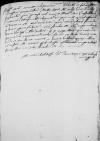Letter #654
Ioannes DANTISCUS to Sigmund von HERBERSTEINBrussels, 1531-07-20
Manuscript sources:
Prints:
| ||||||
Text & apparatus & commentary Plain text Text & commentary Text & apparatus
Magnifico domino
Magnifice Domine, amice observandissime. Salutem et felicissimorum successuum augmentum.
Mitto iterum Magnificentiae Vestrae hunc litterarum fasciculum, quem, quaeso, ad manus
Datae
Magnificentiae Vestrae deditissimus
[1 ] The fascicule, sent this time from Brussels to Cracow, probably contained a diplomatic report addressed to Sigismund I and carrying the same date as the mentioned letter to Herberstein (see AT, XIII, No. 241, p. 224-228), as well as Dantiscus’ letter to chancellor Krzysztof Szydłowiecki (copy, GStAPK, HBA H, K. 759, V.11.6, f. 9r-12v). Herberstein received those letters on August 11 on the border of Styria, and immediately sent them through the Viennese postmaster on to Cracow (see letter No. 19, footnote !!!), where they arrived on August 17, 1531 at the latest (see AT, XIII, No. 283, p. 261)
[3 ] The mention of alleged unrest in Scotland most likely refers to the events of 1526-28, when the mother of James V – Margaret Tudor, who was the regent in his name – divorced the Earl of Angus, which led his relatives – the Douglas clan – to kidnap and hold James V captive at the FalklandPalace. He managed to escape in 1528, to rule by himself. He ruthlessly repressed the nobles (whose role had grown excessively during the regency), and in terms of religious policy fought against new trends. Dantiscus passed on similarly laconic information about Scotland to Sigismund I (see footnote 3)

